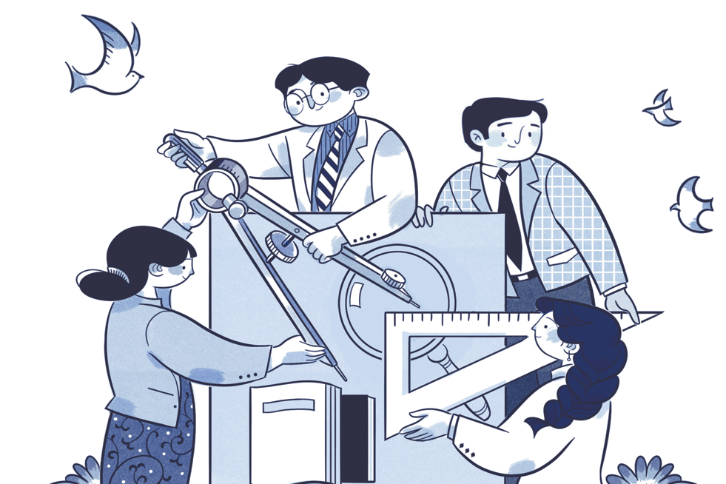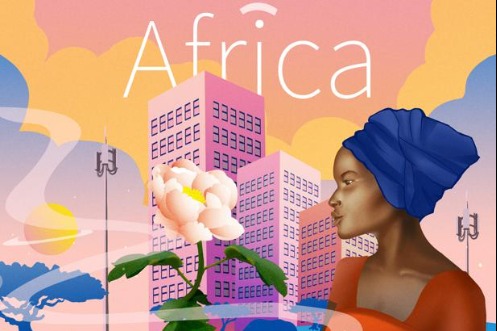Why I feel closest to China in its smaller towns and cities

When an opportunity came up to visit Tongxiang, my initial reaction was, "Where?" but as I looked at online maps my fascination grew. Located on the vast Hangzhou-Jiaxing-Huzhou plain, it lies south of Taihu Lake. It’s an area crisscrossed by a network of waterways, including the legendary Grand Canal.
Memories came back of earlier happy times exploring the lands around Suzhou in neighboring Jiangsu Province. It didn’t take long before I was at Beijing South Railway Station about to board a train to Hangzhou, the provincial capital of Zhejiang. It would arrive around 8:30 pm that evening at Tongxiang.
My preferred option for China travel has always been rail. To me there is no better way of discovering a landscape. That journey by high-speed train was in some ways like opening a geography textbook. The north, where Beijing sits, was just emerging from its dry winter. The first vestiges of spring were showing on the trees but the ground was still mostly brown before crops would start sprouting.
As we crossed over the Yellow and Yangtze Rivers the landscape began to change. Beyond Nanjing the colors of green and bright yellow started dominating the landscape... We were entering the bountiful lands of rice and fish. Due to a generally mild, moist climate, this region is one of China's leading food producers.
Finally reaching our downtown hotel, instead of disappearing into the comfort of my room I went out for a walk, greeted by smiles and hellos from passersby, which brought back memories of earlier days in smaller cities. Today while many of these cities have modernized, Tongxiang being no exception, that feeling of warmth remains
Early next morning before breakfast I spent an hour looking out the window of my room, which overlooked scenes of agricultural activity: plots of yellow, maturing rapeseed plants surrounded by vegetable patches; farmers walking along narrow paths, some leading to what were perhaps former village homes before contemporary urban spread. As I looked beyond however, I could see the skyline of a smart modern city rising. All day I would continue seeing this in Tongxiang; it was difficult to appreciate where urban gave way to rural.
Tongxiang is a county-level city under the jurisdiction of Jiaxing, whose name derives from the Chinese parasol trees planted there many centuries ago. The area has been inhabited for over 7,000 years and is the birthplace of 20th century novelist Mao Dun.
Apart from fish and rice Tongxiang is famed for its silk culture, which I was to experience at the nearby village of Baquan. Driving there I was impressed by the artistry on the gables of whitewashed buildings, with murals depicting rural landscapes and scenes of historic water towns such as nearby Wuzhen. Waterways are still important for moving bulk cargoes, even though the area now boasts efficient expressways and a high-speed rail network.
I admit to knowing little about China’s traditional silk culture before attending a festival underway at Baquan, timed to coincide with the Qingming Festival. On stage, performers gave a ceremonial offering to the god of the silkworm, while locals dressed in bright costumes, including dragon and lion outfits, danced alongside, with women performing what’s known as the “boat dance”.
Interactive displays showcased the complex skills in silk production, including stripping cocoons, warping, spinning and weaving. I watched in fascination as quilts were prepared for bedding and jackets.
We journeyed to a neighboring village, where we enjoyed a healthy lunch in a farmer's home, helping to make the traditional Chinese rice pudding or zongzi. Off the main road, near the festival park, there were more villages bordering waterways, set in an incredible landscape of yellow and green.
Nearby at a former farmhouse, women recycled silk quilts. After several years use, silk bedding loses its fluffiness, but the floss can be recovered for future use. Trails led to another community where people were preparing the sticks used for silkworm cocoons.
I am romantic about the countryside, but Tongxiang is a modern city. While it shares in the prosperity of Zhejiang, one of China’s more prosperous eastern provinces, significant environmental work has helped the region retain its beauty.
Phoenix Lake is a good example. Created relatively recently it sits in the centre of a beautifully landscaped parkland, which have has become a popular playground for people of all ages, set off by seasonal pink blossom in peach trees, along with a library overlooking the shoreline.
From the main urban centre of Tongxiang, the world-famous water town of Wuzhen would be my next destination. Before that, Taoyuan, where a plum blossom festival was underway. Tongxiang attracts many visitors from nearby cities, who come to indulge in the pleasures of dressing up in period costume for photo sessions among the vibrant colors of spring blossoms.
Wooden boats for visitors floated in the canals as we walked toward a visitors' center, where I watched tobacco be prepared for long-stem pipes. Inside we sampled plum wine, but only a sip because we were soon heading, again through more green and yellow landscapes to Wuzhen for more lifelong memories of Tongxiang and its surrounds.


































